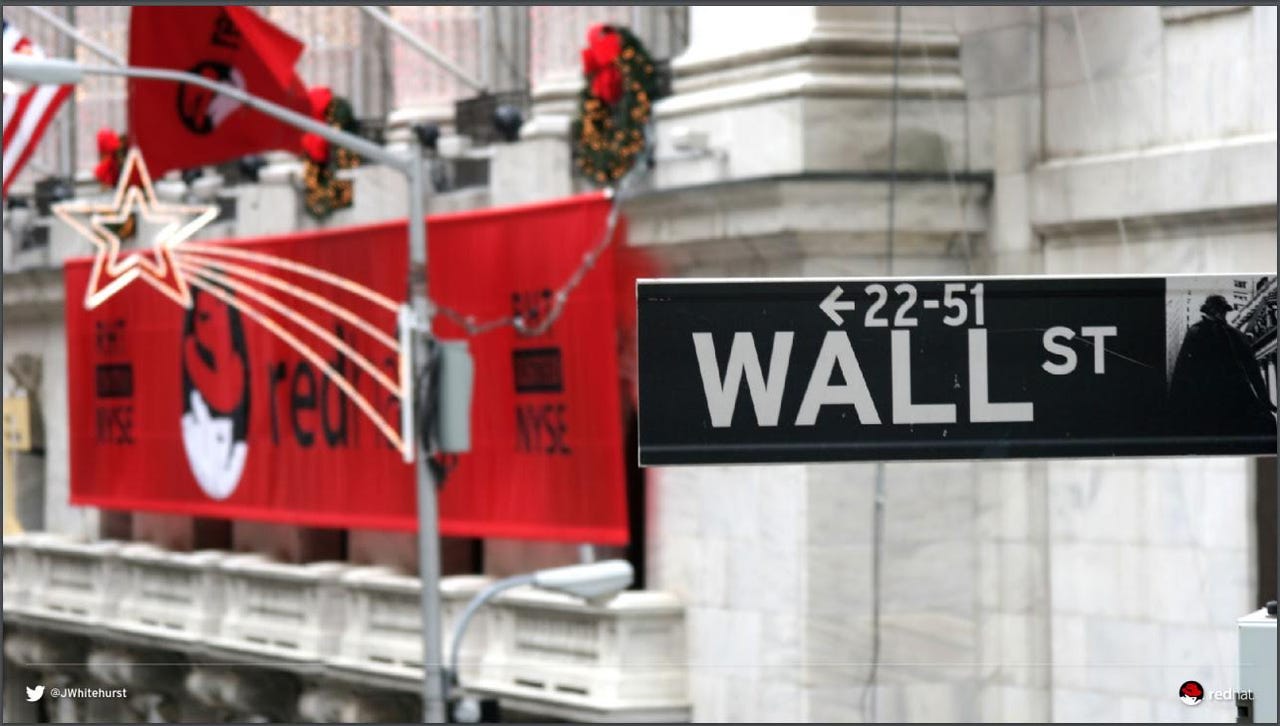Linux turns 30: The biggest events in its history so far

The biggest events in Linux history to date
You can argue about Linux's official birthday. Heck, even Linus Torvalds thinks there are four different dates in 1991 which might deserve the honor. Regardless, as Linux turns thirty, here are some of its highlights and lowlights.
Linus introduces the world to Linux
1991: This message was sent back on August 25th, 1991, to the Minix Usenet newsgroup. Little did Torvalds know just how wrong he was when he wrote about his new free operating system that it was "just a hobby, won't be big and professional like gnu for 386(486) AT clones."
The first Linux war
1992: Andrew Tannenbaum, an operating system guru and creator of Minix, an educational operating system version of Unix, declares "LINUX is obsolete", and Linux's first operating system war is on. In the resulting discussion, Torvalds makes a very telling comment about his vision for Linux, which remains true today, "If the GNU kernel [another attempt to create a free Unix-like operating system] had been ready last spring, I'd not have bothered even to start my project: the fact is that it wasn't and still isn't. Linux wins heavily on points of being available now."
Slackware Linux
1993: There were earlier Linux distributions, such as MCC and Yggdrasil Linux, but Patrick Volkerding's Slackware was the first broadly successful Linux distro, and it's still being updated and used today.
Debian Linux starts
1993: Debian Linux, the popular community Linux, gets its start. Today, it's the foundation for Mint, Ubuntu, and many other popular Linux distributions.
Red Hat Linux is born
1994: Marc Ewing creates Red Hat Linux. Bob Young buys Ewing's company, merges it with his own, and forms Red Hat, the most successful Linux company to date.
Linux conventions start
1995: Linux has its first trade conference, Linux Expo. Many more will follow. Today, there are over a dozen major regional and national Linux trade shows in the US alone.
KDE
1996: KDE, the first major Linux desktop interface, gets its start. Matthias Ettrich started it because he wanted to make an easy-to-use desktop. The K? It stands for "Kool." The name was also a play on Unix's Common Desktop Environment (CDE).
SUSE gets started
1996: In the same year, after working with Slackware and Red Hat Linux, SUSE, the top European business Linux, releases its first standalone Linux. SUSE remains a major Linux and cloud power.
GNOME
1997: Miguel de Icaza and Federico Mena started work on a new Linux desktop, GNOME desktop, built entirely on free software. It, along with KDE, will become one of Linux's two most important desktops.
The Halloween Memos
1998: Microsoft starts to target Linux. Eric S. Raymond, an early Linux and open-source leader, reveals the Halloween Documents, which show that Microsoft takes Linux seriously as an enemy and starts to formulate its anti-open-source and Linux campaigns. Over a decade later, Microsoft will change its tune.
Corel Linux desktop
1999: Corel releases the first mainstream Linux desktop. While unsuccessful, it would set the path for other popular Linux desktop distributions, such as Ubuntu.
Linux vs. Windows on servers
1999: Linux is benchmarked for the first time against Windows NT in file serving. Linux wins. The Linux vs. Windows server operating system wars are on. Linux eventually wins. Today, Linux dominates both the webserver and cloud space.
IBM invests a billion dollars in Linux
2000: In this year, IBM announced that it would invest a billion dollars in Linux in 2001. It would prove to be IBM's best investment ever. With this move, IBM also breaks the enterprise market ice for Linux.
Linux 2.4 is released
2001: After some delays, Linux 2.4 is released. With this version, Linux becomes competitive with Solaris and other high-end server operating systems.
SCO Linux wars begin
2003: SCO, formed from the old SCO Unix company and the Caldera Linux business, turns its back on its Linux history, sued IBM and other companies, and tried to prove that Linux is a copy of Unix.
The company fails, but for years its FUD bedevils Linux's commercial acceptance.
Ubuntu arrives
2004: Ubuntu is created. Built on top of Debian Linux, Ubuntu becomes an extremely popular Linux desktop OS and the most important of all cloud Linux distributions.
Linux rules supercomputers.
2004: More than half the world's fastest supercomputers run Linux. By 2017, all supercomputers are running Linux.
Big business embraces Linux
2005: Any doubt about Linux being a major business player is smashed by Linus Torvalds's appearance on the cover of BusinessWeek. The tagline? Linux Inc. Today, you'd be hard-pressed to find any major business which isn't running on Linux.
Android arrives
2007: The Open Handset Alliance, which includes Google and numerous hardware vendors, announces Android. It will become the most popular end-user operating system of all as it runs on more than a billion smartphones.
The stock exchanges move to Linux
2008: The New York Stock Exchange, soon to be followed by many of the other major stock exchanges of the world, switched to Linux for its core operating system.
Linux isn't becoming big business. Linux is big business.
Watson wins at Jeopardy
2011: IBM's Watson, running Linux, wins at Jeopardy and sets a new standard for expert systems.
The rise of the Chromebooks
2011: Google introduces the first Chromebook, the CR-48. It runs Gentoo-Linux based ChromeOS. By 2015, Chromebooks are outselling Windows laptops.
The cloud runs on Linux
2012: IT starts its move from servers and data centers to the cloud, and the cloud runs on Linux. By 2019, over half of Microsoft's customers' virtual machine (VM) instances are running Linux, even on Microsoft Azure.

Red Hat makes its first billion
2012: Red Hat becomes the first billion-dollar open-source company. In 2016, it became the first two-billion-dollar Linux business.
Microsoft loves Linux
2014: Maybe the leopard can change its spots? Microsoft CEO Satya Nadella declares that Microsoft loves Linux. The company proves it by supporting Linux and open-source software both on its cloud and by deploying it internally.
Microsoft open sources its patent portfolio
2018: In perhaps its most radical pro-open-source move, Microsoft opened up its entire patent portfolio to the Open Invention Network open-source patent consortium members. This is the group that defends all of Linux's patents.
Microsoft launches Linux for Windows 10 users
2019: Microsoft follows up by introducing its own native Linux, Windows Subsystem for Linux 2.0, for Windows 10 users. With it, people can run Linux simultaneously with Windows.
IBM acquires Red Hat
2019: Red Hat is acquired by IBM for $34-billion, making it the biggest software acquisition ever. With this move, it becomes clear that Linux now dominates the technology world. Not bad for a hobby!
All roads to the cloud go through Linux
2020: The global cloud market is now over $100-billion a year. 90% of it runs on Linux. Even on Microsoft Azure, more than half of all VMs are Linux.
Rust never sleeps as the language arrives in Linux
From the beginning, Linux, like Unix before it, was based on C. But, now the newer and more secure by design Rust language is being merged into Linux.